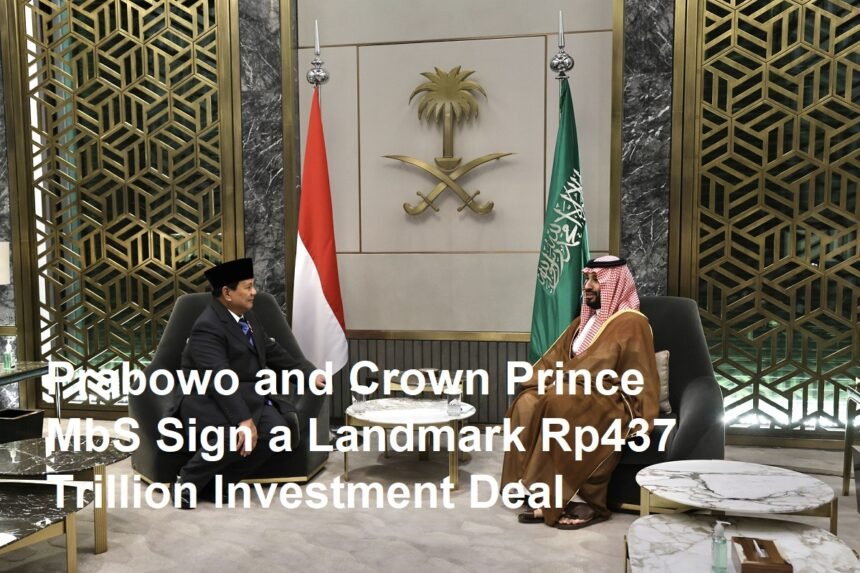Introduction
In July 2025, global headlines turned their attention to a landmark economic partnership: Indonesia’s President Prabowo Subianto and Saudi Arabia’s Crown Prince Mohammed bin Salman (Prince MbS) signed a strategic investment deal valued at a jaw-dropping Rp437 trillion. As someone passionate about both the evolving global economy and shifting geopolitics, I find myself viewing this moment with a mixture of excitement, curiosity, and measured optimism. Let’s unpack what this deal means for Indonesia, Saudi Arabia, and the wider region.
The Momentous Signing: A New Chapter
Amid a flurry of ceremonial handshakes and press flashes, the agreement between Prabowo and Prince MbS represents far more than an eye-catching sum. The Rp437 trillion—that’s approximately $27 billion—signals unprecedented cooperation, aiming to supercharge growth, technological exchange, and infrastructure renewal across Indonesia. From my perspective, it’s not just the billions that matter, but the doors this deal may open for new networks, skills, and ambition across Southeast Asia.
What Does the Investment Cover?
Initial statements from both governments hint at broad priorities: energy infrastructure, renewable resources, digital innovation, and high-impact tourism. If you ask me, Indonesia is uniquely positioned for these sectors. Its archipelago of possibility—over 17,000 islands—houses untapped energy reserves, spectacular tourism locales, and a young, tech-savvy workforce. I envision smart grids, next-gen battery plants, and eco-tourism projects blooming on once-quiet coastlines.
Equally fascinating is Saudi Arabia’s motivation. The Kingdom is on a mission to diversify its oil-dependent economy under Vision 2030. By investing heavily in Indonesia, Saudi Arabia cements a place in Southeast Asia’s rise, hedging its bets for a post-oil era. This is a practical alliance—Prabowo gains capital and know-how, while Prince MbS gets new markets and allies at a critical historical juncture.
Economic and Diplomatic Impacts
A deal of this magnitude immediately raises expectations. In the short term, I foresee tangible benefits: job creation, technology transfer, and a surge in investor confidence. Large-scale construction and tech projects have a knack for unlocking local entrepreneurship and raising living standards. On the diplomatic stage, Indonesia now steps closer to the Gulf as a trusted partner, potentially influencing global conversations on energy, Islamic finance, and climate adaptation.
That said, I would be remiss not to acknowledge the complexities ahead. Coordinating multi-billion dollar projects across borders, cultures, and regulatory regimes isn’t for the faint-hearted. It will take persistent political will and genuine collaboration; setbacks are almost inevitable. The public will also be watching carefully for transparency and real, inclusive benefits rather than top-down enrichment.
Challenges and Hopes
Ambitious as this partnership is, I can’t help but reflect on lessons from similar mega-deals worldwide. Sometimes projects stall, money gets tied up, or promised benefits fall short. For Indonesia and Saudi Arabia, success will depend on implementation—how quickly projects kick off, which industries get priority, and how voices from local communities are integrated into decision-making. If they get this right, it could serve as a model for similar alliances between developing and emerging powers.
As an observer, what excites me most is the prospect of Indonesia cultivating deeper expertise—especially in green industry and tech—that could fuel regional leadership. For Saudi Arabia, this deal could accelerate its transformation from an oil superpower into an all-around innovation hub.
Looking Forward
In a rapidly changing world, bold investments like this Rp437 trillion partnership stand as symbols of intent. Both Prabowo and Prince MbS have put their reputations on the line, signalling a shared belief in the possibilities of collaboration over isolation. Only time will tell if these ambitions are realized. But for now, this historic deal sets the stage for a new chapter in Southeast Asia–Middle East relations, one shaped not only by big numbers but by shared aspirations for a more dynamic, interconnected future.












